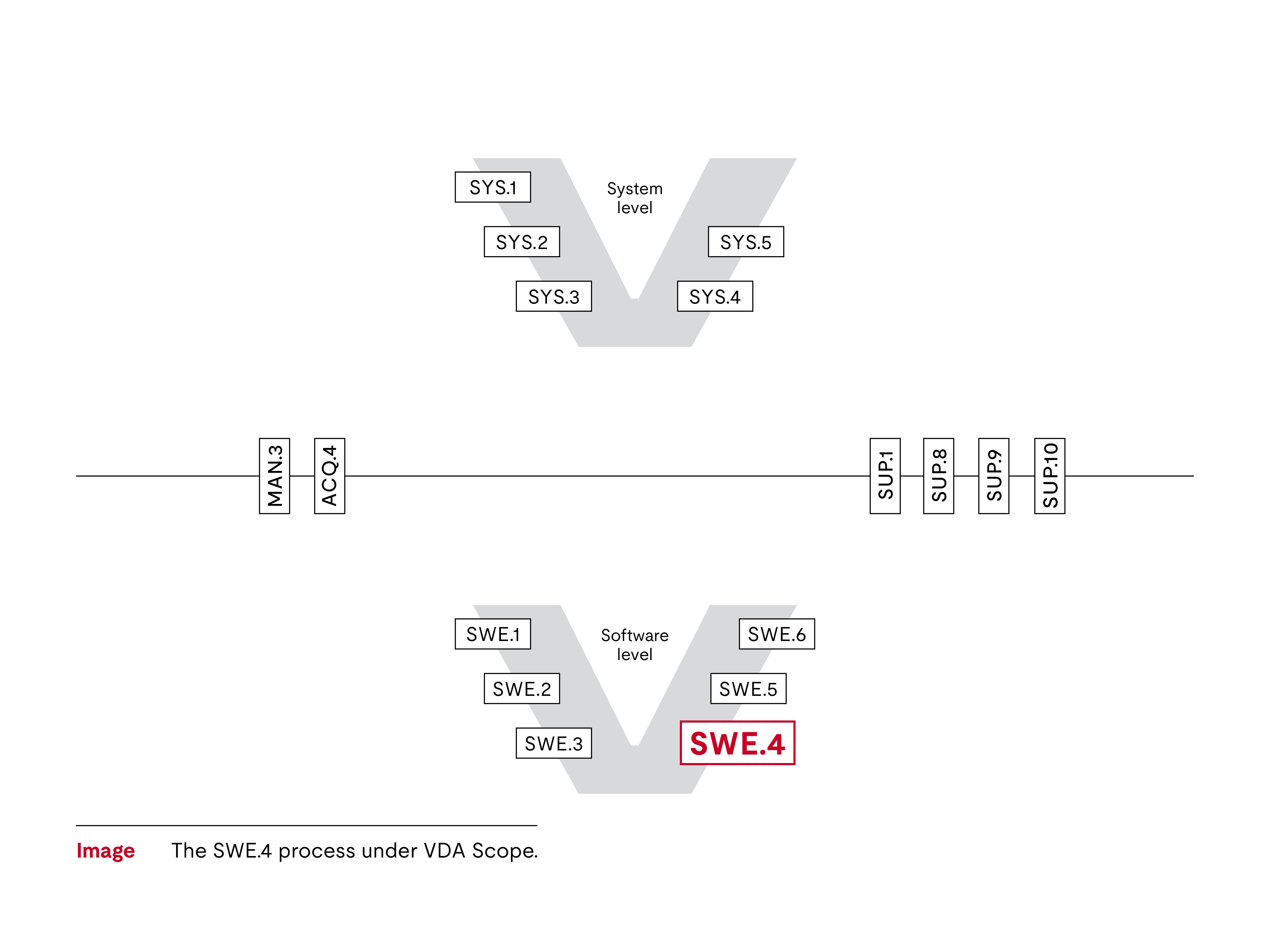
Process ID: SWE.4
Process group: Software Engineering
Automotive SPICE® is a trademark of VDA QMC.
The Software Unit Verification process in Automotive SPICE® (also known as SWE.4) helps your organization demonstrate that the implemented software units work as expected and meet necessary requirements. These requirements were previously specified in Software Detailed Design and Unit Construction (SWE.3).
Software Unit Verification helps organizations verify whether software units implement the detailed design and the associated functional and non-functional requirements corresponding to the required quality.

Unit verification is the first group of tests in a series. Failure to complete unit verification may lead to two negative consequences:
- Some problems may be overlooked, even in subsequent tests, because these tests have a different focus.
- If these problems are discovered during a higher test level, most of the tests in between will need to be rerun.
Additionally, incorrect behavior at the unit level can mask problems at higher test levels. Completing unit verification helps uncover problems while also supporting reduced effort and costs.
The following activities are the most important of Software Unit Verification in Automotive SPICE®:
1. How to specify and select software unit verification measures.
The unit verification measures to be used should be specified to cover the software detailed design, including the following required types of verification:
- Static and dynamic analysis – Checking the code with analysis tools.
- Code reviews – Manual reading and review of the code by colleagues.
- Unit tests – Written specification of tests to demonstrate compliance with the detailed design.
- Regression tests – The repetition of tests in case of changes to the software to confirm that the unchanged portions still work as anticipated.
Additionally, the specification for verification methods should cover the following topics:
- The verification object in question.
- The methods for developing the verification measures.
- Pass/fail criteria.
- Entry, exit, and interruption criteria.
- The required verification environment and infrastructure.
However, when specifying the verification measures, the format is not mandated. This process has a strong connection to Problem Resolution Management (SUP.9), allowing synergies in the handling of defects or failed verifications.
Another aim and expectation is that for different deliveries the software is properly verified. Therefore, the appropriate verification measures must be selected. Here, there is a strong link to the project plan and the demand plan as coverage targets should also be considered. The regression verification also requires the selection of the desired measures.
2. Provide bidirectional traceability and consistency to the units in the detailed design
- For each unit in the detailed design, you must know the corresponding test and vice versa.
- For each unit, you must know the results of code reviews and static analysis.
- For each unit test specification, you must know the unit test results.
Consistency requires that:
- The unit is linked to the correct test.
- This test is suitable to test the unit completely. If not, additional tests must be linked.
3. Summarize and communicate the test results.
This is usually referred to as a test summary report. As the name suggests, the report should summarize the results and hide unnecessary details. More specifically, it must show compliance with the detailed design. Although it is only a summary, the report must provide adequate information to offer complete clarity.
Why choose UL Solutions Software Intensive Systems for Automotive SPICE® support?
UL Solutions Software Intensive Systems can support automotive original equipment manufacturers (OEMs) and suppliers in:
- Achieving the required capability levels within key development processes.
- Systematically improving existing workflows and methods.
- Evaluating the status of process improvements through formal assessments and gap analysis.
- Fulfilling the requirements of Automotive SPICE® in harmony with security, functional safety and agile methods.
- Training staff and assessors.
Learn more about the Automotive SPICE® Software Unit Verification process
To further your understanding of the Automotive SPICE® Software Unit Verification process (SWE.4), watch our video.
Get connected with our team
Thanks for your interest in our products and services. Let's collect some information so we can connect you with the right person.
